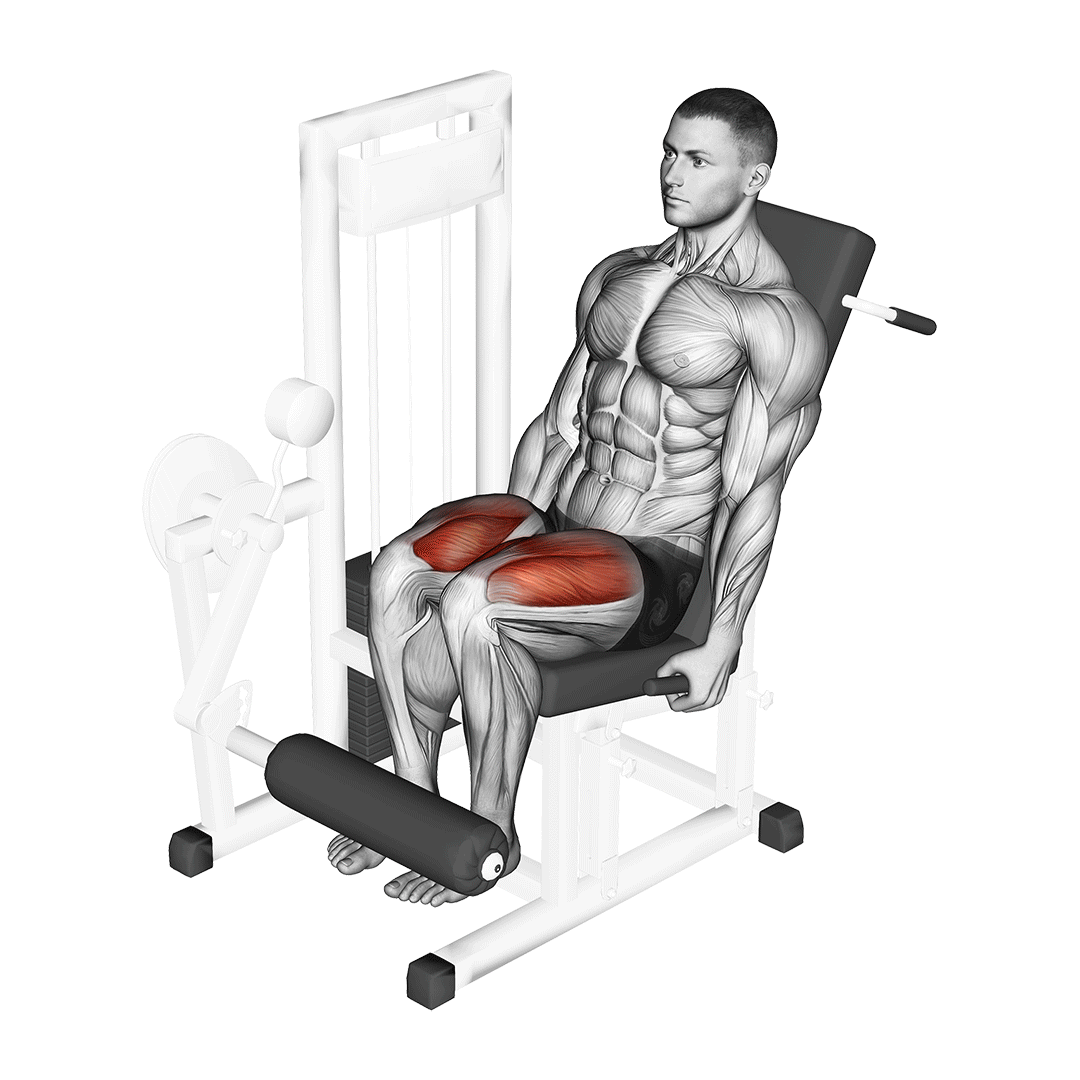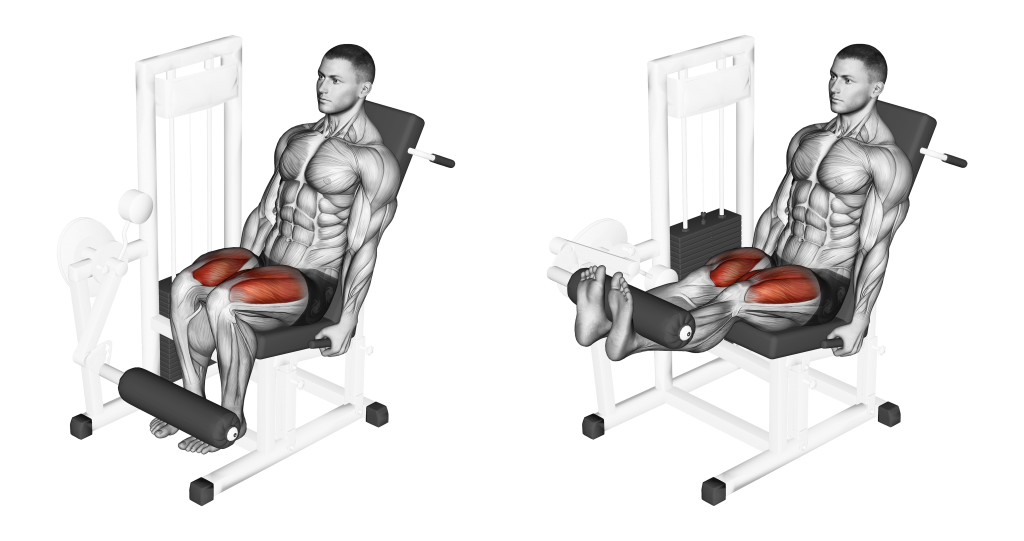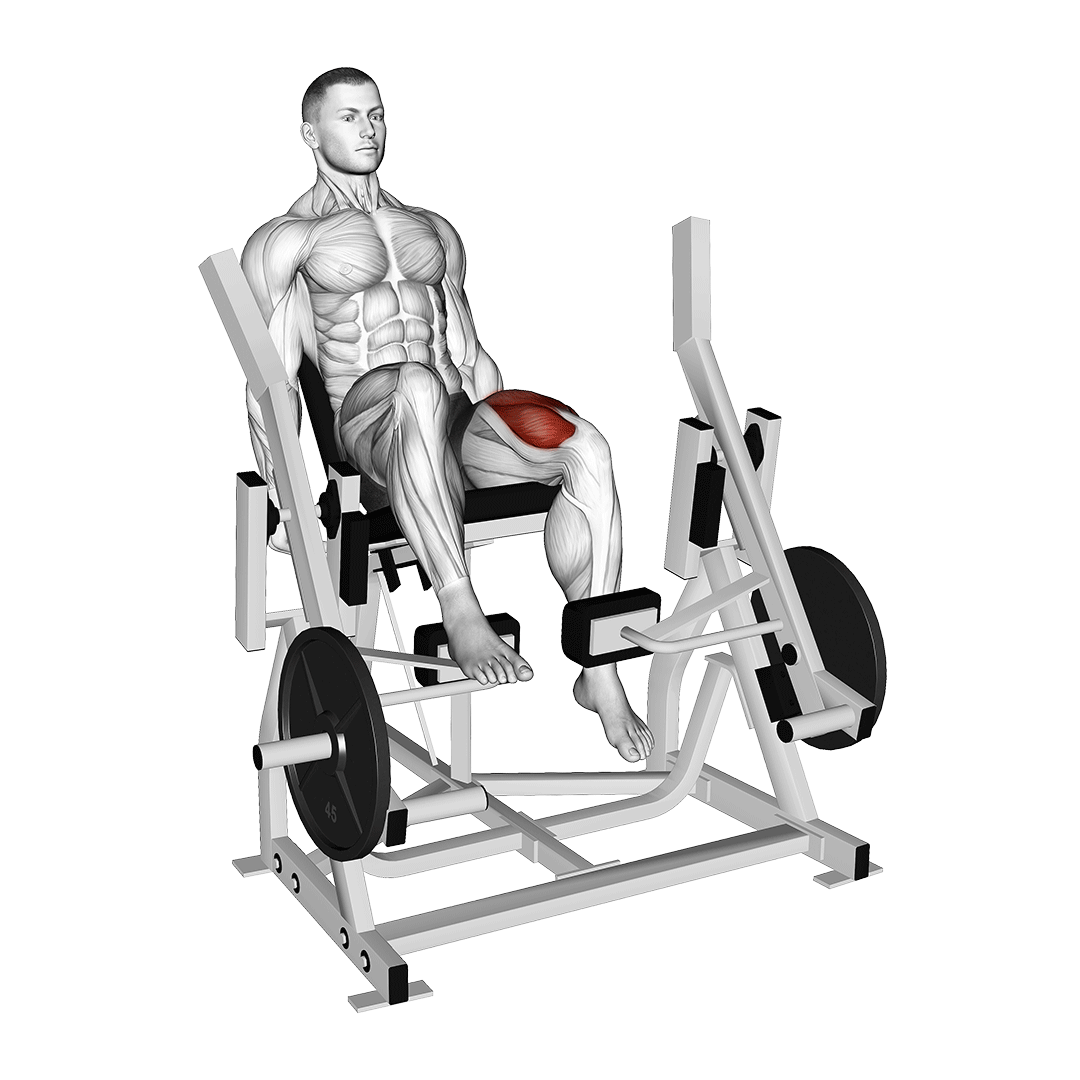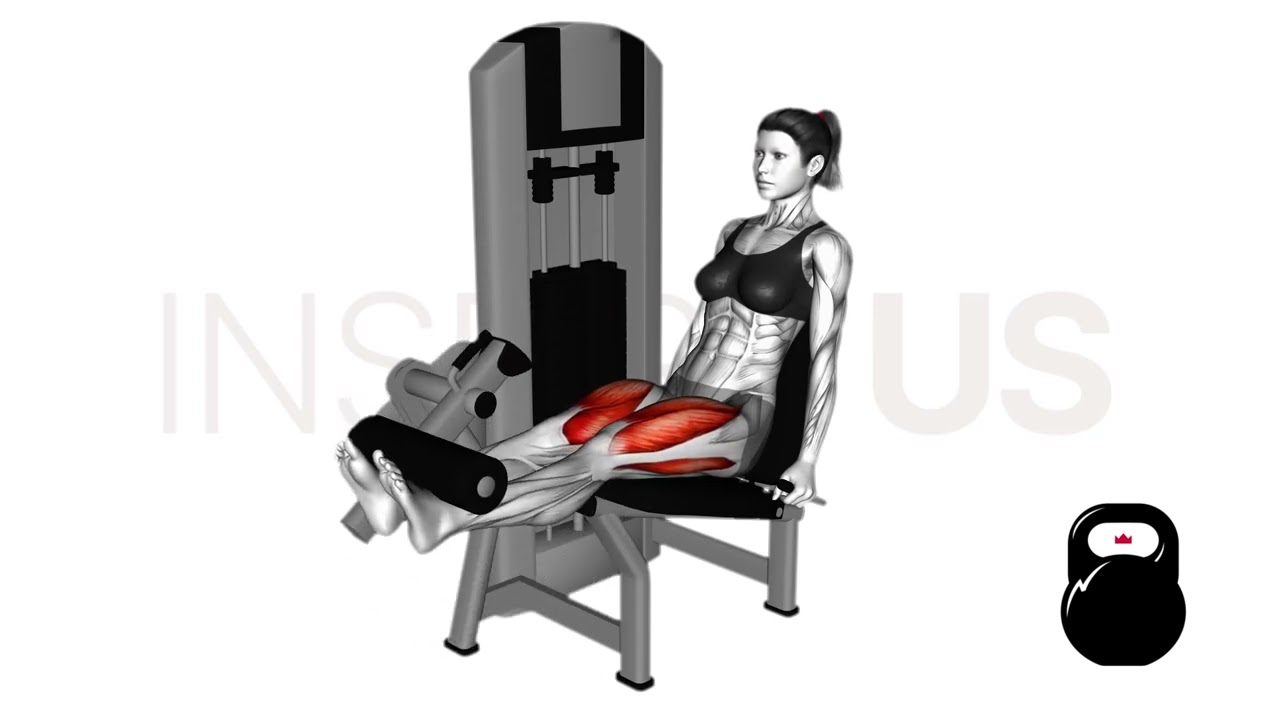Leg Extensions: Benefits, Muscles Worked, and More
When speaking of leg exercises, most weightlifters will imagine movements like the back squat or leg press - but what if high amounts of isolated volume is the goal?
For such purposes, there are few exercises as effective as leg extensions.
With a full range of motion, low impact and all the other benefits that come with being a machine-based exercise, one can see why the leg extension has become a staple in many bodybuilding workouts.
To describe the leg extension as succinctly as possible - it can be said that the leg extension is an isolated machine exercise where the lifter will sit with a pad providing resistance at the ankles. The quadriceps are contracted to counter said resistance and extend the knee, thereby resulting in significant muscular hypertrophy.
What are Leg Extensions?
From a more technical viewpoint, leg extensions are a single-joint isolation exercise performed with the use of machine-based resistance.

As the name implies, leg extensions solely rely on extension of the knee through contraction of the quadriceps femoris, and as such are used in programs where quadriceps training volume is insufficient.
Who Should Do Leg Extensions?
Leg extensions are relatively simple and accessible to lifters of all experience levels and goals.
However, individuals with a history or predisposition towards knee injuries are better left seeking an alternative exercise, as leg extensions place significant stress on the knees.
How to Program Leg Extensions
Leg extensions are most effective as a high-volume accessory exercise, and as such should be performed after heavier compound exercises have already been completed.
In terms of volume, a good starting point is to perform 2-3 sets of up to 16 repetitions each, aiming for the minimum effective amount of weight.
How to Do Leg Extensions
To perform a repetition of leg extensions, the lifter will sit within the leg extension machine, adjusting it so that the pads are set firmly against their ankles and the handles are within arm’s reach.
Then, ensuring that the rest of the body remains stationary, they will squeeze their quadriceps muscles and move the shins upwards - stopping just shy of full knee extension.
From this point, the lifter will then slowly lower their legs back to their original position beneath them, thereby completing the repetition.
What Muscles are Worked by Leg Extensions?
Leg extensions are an isolation exercise, meaning that they only train one muscle group; the quadriceps femoris.
What are the Benefits of Leg Extensions?
Apart from the more generalized benefits of resistance exercise, leg extensions are also quite effective at achieving several niche effects related to the quadriceps and the knees.
Excellent for Quadriceps Development
Few exercises isolate the quadriceps femoris to the degree that leg extensions do - both because of the difficulty in isolating any leg muscle, as well as the angle of resistance involved in the leg extension.

For lifters seeking stronger and larger quadriceps, combining leg extensions with heavy compound leg exercises like the squat and the deadlift is the ideal approach.
Reinforcement of Knee Extension
The main biomechanic associated with the quadriceps femoris is that of knee extension - or what is otherwise known as straightening the legs.
As such, it should be no surprise that training the quadriceps femoris through targeted isolation work like the leg extension will also reinforce any biomechanics associated therein.
With regular performance, lifters will find that leg extensions create a more stable and powerful knee extension, reducing future risk of injury and improving general locomotion of the lower body.
Low Impact and Low Risk of Injury
Many novice lifters shy away from lower body exercises due to the amount of weight involved - a factor that is not so much an issue with leg extensions, as it is both machine-based and utilizes a relatively low load.
This machine-based resistance and low amount of weight equates to less strain being placed on the joints, as well as directly reduces the risk of any injuries occurring.
It is important to note that leg extensions do place a significant amount of stress on the knee joint, however, and as such should be performed with suitable caution therein.
Allows for Additional Quadriceps Training Volume
Because most quadriceps exercises are of a compound nature, the quads are often limited in volume by the fatigue of other nearby muscle groups. This can lead to underdeveloped or unbalanced quadriceps muscles, as well as poor lower body conditioning as a whole.
Fortunately, leg extensions do not recruit any other muscle group apart from the quadriceps, and as such are excellent for increasing the total volume placed on the muscle without limiting factors like secondary mover muscle fatigue.
Most Common Leg Extension Mistakes
Though the leg extension is relatively simple and easy to learn, there are nonetheless a few common mistakes that lifters should avoid for the best results.
Locking Out the Knees
Perhaps one of the most commonly made errors with the leg extension is fully extending the knees at the apex of the repetition.
This can place unneeded pressure on the joint while under significant mechanical stress, and increases the risk of developing tendinopathy or other chronic overuse injuries.
Performing the exercise until the knees are almost locked out is the best way to avoid injuring them with leg extensions.
Moving the Rest of the Body
During leg extensions, moving the rest of the body can indicate that too much weight is being used, or that the lifter has not adjusted the machine to their proportions.
Regardless of the cause, moving any other joint apart from the knees can shift the emphasis of the exercise away from the quadriceps muscles, thereby negating the entire purpose of the leg extension.
Lifters should ensure that they are moving as little as possible by stabilizing themselves through the machine’s handles and adjusting the pads as needed.
Loading Too Much Weight
Just as is the case with all other exercises, performing the leg extension with an unreasonable amount of weight can result in poor form adherence and acute injuries.
The risk of injury is especially large with leg extensions due to their isolated contraction of the quadriceps, and the fact that the knees are not designed to withstand the angle of resistance used by the machine.
In order to perform the exercise safely, lifters should aim for an amount of weight that allows for 8-15 repetitions without reaching total muscular fatigue.
Leg Extension Variations
For lifters wishing to further increase the specificity of their leg extension sets, altering the direction in which the toes are pointing - or using only a single leg - can help focus on a particular part of the body more.
1. Single-Leg Leg Extension
While less resistance will be possible, performing the leg extension with only a single leg at a time can allow lifters to better focus on proper muscular contraction.

If performing single-leg leg extensions, additional attention should be paid to form as the risk of injury is relatively greater.
2. Inward Pointing Leg Extensions
By pointing the toes inwards during a leg extension repetition, a greater emphasis may be placed on the vastus lateralis portion of the quadriceps femoris - or what is otherwise known as the outer-facing “teardrop” head.

While the rest of the quadriceps will nonetheless be recruited, making this small change in foot orientation can help lifters further specify the training stimulus of their workout.
3. Outward Pointing Leg Extensions
Just as how pointing the toes inwards will make the leg extension focus on the vastus lateralis muscle more, so too will pointing the toes in the opposite direction place greater emphasis on the vastus medialis muscle.

The vastus medialis lies on the opposite side of the quadriceps femoris muscle group, and will nonetheless still be trained alongside the rest of the quads, even with a greater emphasis therein.
Frequently Asked Questions (FAQ)
What are Leg Extensions Good for?
Leg extensions are excellent for building up quadriceps muscle mass and strength - all without the need for heavy compound exercises or the use of free weight equipment.
To get the most out of your leg extension sets, high volume is a must. Aim for between 8 and 16 repetitions and a moderate amount of weight.
What are the Benefits of Leg Extensions for Athletes?
Leg extensions reinforce knee extension, and are excellent for building up the quadriceps femoris muscles.
Regardless of the athlete’s particular sport, having stronger quads and a reinforced knee joint are doubtless vital to performing any athletic activity well.
In addition, the fact that leg extensions are an isolation exercise means that they mesh quite well with many athletic training programs - most of which are primarily composed of compound exercises with only incidental quadriceps recruitment.
Is the Leg Extension Good for Height?
Yes - the leg extension exercise can help encourage growth by increasing the volume of hormones responsible for such development. However, keep in mind that once your epiphyseal plates have sealed, it is unlikely any sort of exercise will encourage further height growth.
Final Thoughts
Leg extensions are a classic, and arguably one of the best isolation exercises for a leg day workout.
That being said, it is important to remember that leg extensions are only a small piece of what should be a larger puzzle. Pair leg extensions with heavier compound exercises that target the rest of the lower body, and ensure that proper form is followed to the letter.
If at any point you begin to experience pain, numbness, or a “snapping” feeling in the legs, it is best to stop performing leg extensions and to seek the advice of a medical professional.
References
1. Jakobsen MD, Sundstrup E, Andersen CH, Bandholm T, Thorborg K, Zebis MK, Andersen LL. Muscle activity during knee-extension strengthening exercise performed with elastic tubing and isotonic resistance. Int J Sports Phys Ther. 2012 Dec;7(6):606-16. PMID: 23316424; PMCID: PMC3537465.

